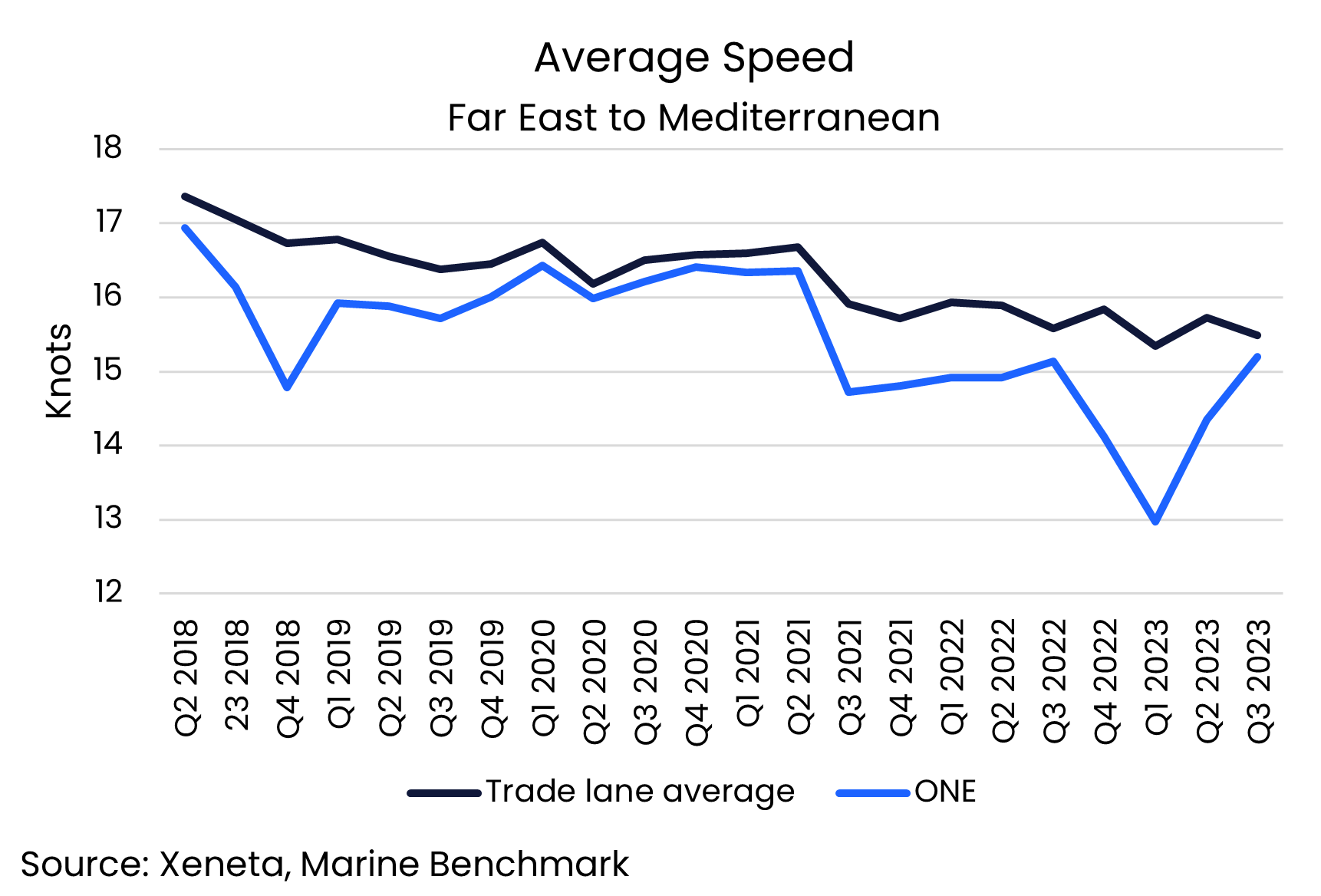Ocean Network Express (ONE) still rules the Xeneta and Marine Benchmark Carbon Emission Index (CEI) on the Far East to Mediterranean – but the gap is starting the close.
The CEI ranks carriers by their carbon emissions, with lower scores representing better performance in this regard. In Q3, the latest monitoring period, ONE clocked a CEI score of 69.5 to retain top spot.
Q3'23 CEI Carrier Ranking
Far East to Mediterranean
|
RANKING |
CARRIER |
CEI SCORE |
| 1 | ONE | 69.5 |
| 2 | Maersk | 74.0 |
| 3 | CMA CGM | 76.5 |
| 11 | ZIM | 128.5 |
The dominance ONE holds over the Far East to Mediterranean CEI is demonstrated in the fact the latest Q3 score is 20.8% lower than the trade lane average.
ONE has also taken the top spot on 19 out of the last 23 evaluation periods, with only Yang Ming and Evergreen being able to briefly dethrone them.
There is no one factor that fully explains why ONE has been able to outperform its peers so consistently on the Far East to Mediterranean CEI over the past few years. For example, the size of ships it deploys is in line with the trade lane average, which is Q3 stood at 14 900 TEU.
However, age of ships deployed on this trade is certainly an area where ONE outstrips the competition. In Q3, the average age of ships deployed by ONE was just over three years old, which is less than half the average across all carriers on this lane.
When looking at filling factor – another key measurement that impacts the CEI - ONE did not take top spot. While it was beaten by Maersk and CMA CGM in Q3, it was by less than one percentage point and ONE also sticks out as one the few carriers to register a year-on-year increase in filling factor.
Sailing speed is perhaps the biggest reason for ONE consistently being the most carbon efficient carrier on this trade. In all quarters covered by the CEI since Q1 2018, ONE ships have sailed at a slower average speed than the trade lane average.
However, the gap is starting to close, with ONE increasing its average speed from 13.0 knots in Q1 to 15.7 in Q2 before falling back to 15.2 in Q3. Meanwhile, the trade lane average has decreased in the same period to now stand at 15.5 knots.

Xeneta’s CEI will keep providing valuable insights into carriers' carbon emissions performance and overall trade lane performances while balancing climate change-related responsibilities within a hugely challenging market. Keep in the know as we cover further major trades an proceed to start the new year.
Get an honest view of carrier emissions
Stay one step ahead of your competitors by making well-informed and sustainable choices when selecting shipping carriers. Xeneta and Marine Benchmark offer an independent and trustworthy Carbon Emissions Index (CEI) data, ensuring accuracy without any guesswork. By utilizing AIS tracking of real-time sailings on 48 major trade routes worldwide, with coverage expanding further in the near future, you can rely on up-to-date information. Don't settle for outdated and unreliable data. Schedule a demo of the CEI today and begin making intelligent shipping decisions.





